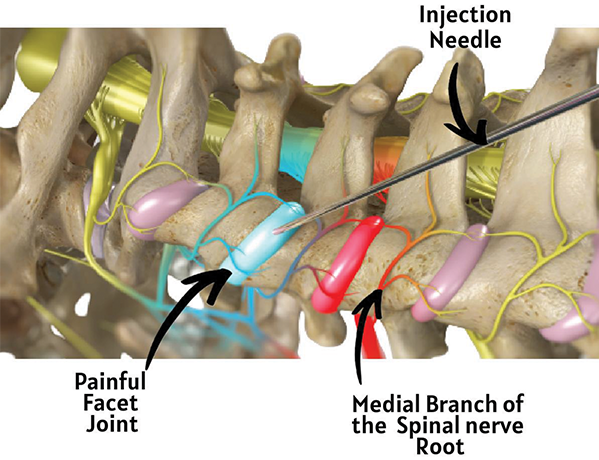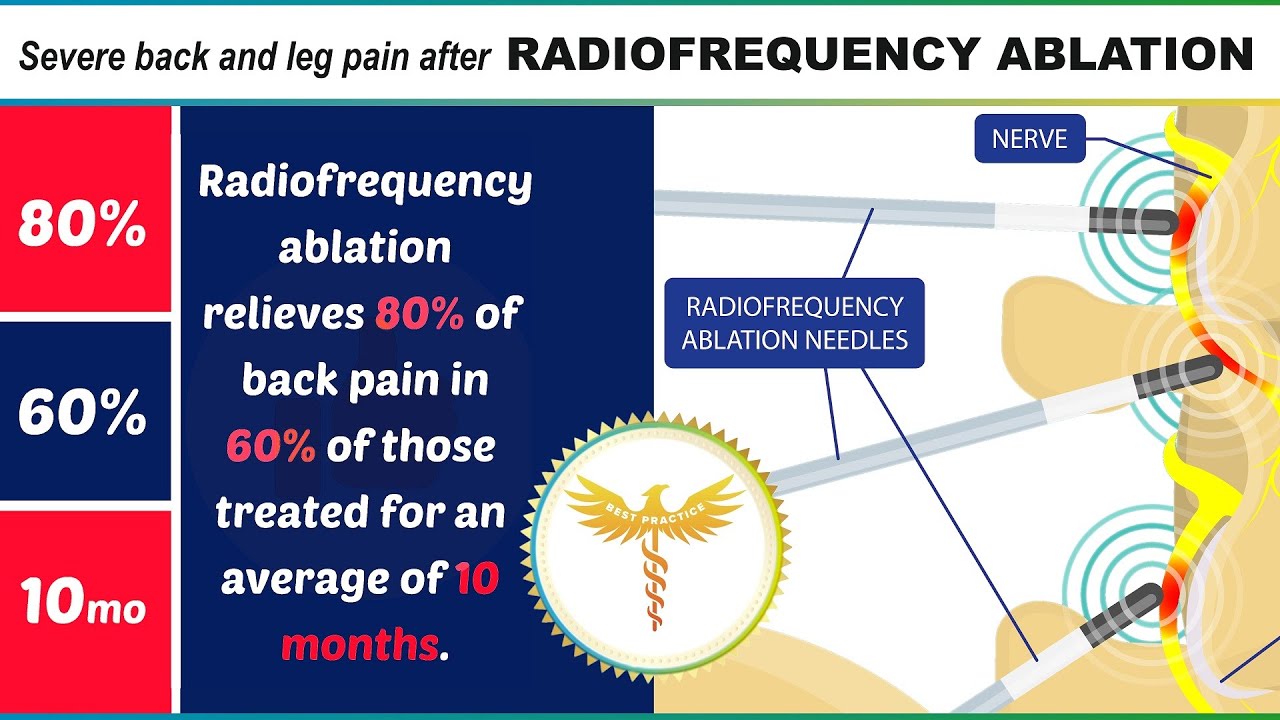
Why you may have severe back and leg pain after RFA (and why not to panic!)
Why you may have severe back and leg pain after RFA (and why not to panic!) https://bestpracticehealth.com/wp-content/uploads/2023/01/Banner.png 1024 535 Best Practice Health Best Practice Health https://bestpracticehealth.com/wp-content/uploads/2023/01/Banner.pngRadiofrequency ablation (RFA) is a common procedure for the treatment of low back pain due arthritic facet joints. Prior to RFA a pain management doctor typically performs a medial branch block to make sure your pain originates in a painful joint. Medial branch blocks are done with a needle. Radiofrequency ablation is done through a probe that is thicker than the needle used for the block.
In a medial branch block numbing medicine from an injection needle freezes your joints so that you ( temporarily ) do not feel your facet

It is not uncommon to have back and even leg pain after radiofrequency ablation on the back. According to Dr. Ann Cherie Foxx, a board-certified pain management specialist, “soreness after RFA is to be expected since the procedure involves placing a probe through a large needle into the back, neck, or knee. However, just like other injections, the soreness should resolve within a few days.”
Doctors often give three reasons why back pain after RFA may feel more intense than a typical injection:
- Muscle spasm. When the pain management doctor “burned your nerves” they also burned a fair amount of muscle fiber. As you might imagine, your muscle does not appreciate that. Your body responds with muscle spasm. Most people think of radiating pain as being due to a nerve problem; however, muscle spasm alone can produce a strong feeling of radiating pain. For example, a heart attack is the death of some muscle in your chest, but the pain is well known to extend into the left arm.
- Nerve irritation. The medial branches are the thin nerves shown in red (irritated), blue (blocked) and yellow (nothing happening) in the picture above. RFA burns the medial branch nerves without cutting them. If a medial branch is injured but still functioning, it does what medial branches do— sends a pain signal to the brain. The pain from a medial branch is mostly off the side of the spine, radiates to your butt, feels like it is coming from your hip, and burns in the leg.
- Least common is radiculopathy—pain coming from the spinal nerve root that is the source of the medial branch. The spinal nerve root is near to the medial branch. If the radiofrequency electrode was too close, the nerve root can be irritated by the RFA procedure.
All three of these pain problems are scary but typically temporary. RFA has a strong record of relieving 80% of back pain in 60% of those treated for an average duration of 10 months. Pain right after RFA is not a sure sign of failure.

But you do need to control the pain due to the procedure while your body heals. Try ice for swollen muscles right after the procedure. By the next day transition to moist heat from a soaking tub, hot shower, or warm packs; it works wonders for sore muscles. If you have a chiropractor or have done acupuncture, this may be a good time for treatment. If medications are desired, non-steroidal anti-inflammatory medications (think Aleve and ibuprofen) and muscle relaxants (Flexeril etc.) are good first-line options for back pain. Avoid narcotics (Percocet, Vicodin, codeine); in addition to being a strong predictor of failed RFA, long term opiate use leads to dependence, tolerance, and too often even death.
“If it feels like something more than muscle soreness, bring it up to your physician for further evaluation,” Dr. Foxx advised.
Indeed, if pain persists after RFA check back with your pain management doctor. Everyone is different. In particular, your medial branch may not be located exactly where your doctor expected it. In rare cases a repeat medial branch block and additional treatment may be needed.
See the video:
Neurosurgeon explains severe back or leg pain after RADIOFREQUENCY ABLATION
OR Check out the Short:

Dr. Dan Lieberman, MD
- Posted In:
- Radiofrequency Ablation












